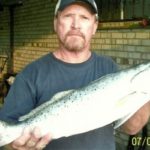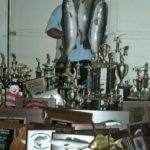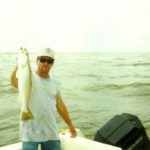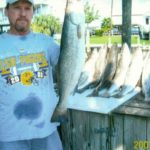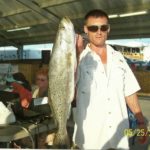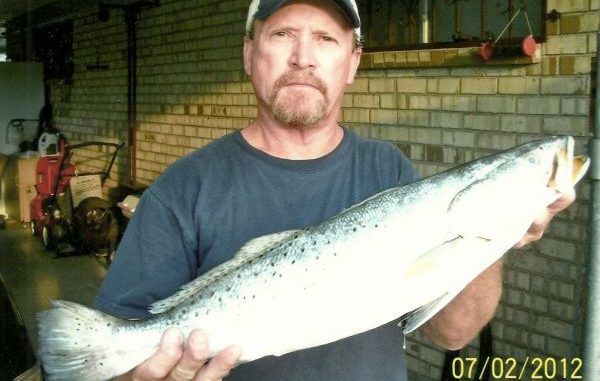
Consistently showing up in the Grand Isle Tarpon Rodeo standings isn’t easy, but this trout angler has it down to a science. Here’s how he snags those lunker specks.
There are fishing rodeos all across south Louisiana, but there is only one International Grand Isle Tarpon Rodeo.
The nation’s oldest saltwater fishing tournament has gained legendary status since it was established in 1928. And that feeling is not confined to the small bayou towns that dot the highways leading to Grand Isle, the small spit of land sitting like a pearl at the farthest stretch of Jefferson Parish.
No, thousands of anglers from all over the Gulf Coast — and sometimes farther — make their way to Grand Isle each year to participate.
They come for the food. They come for the music. They come for the parties. They come to see, and they come to be seen.
But most of all, they come for the fishing.
That last reason is certainly why Ulysse J. Toups Jr. heads to Grand Isle — not only for the rodeo, but whenever he can break free to wet a line.
The man better known as “Bootsie” to the fishing community is something of a legend himself at the tarpon rodeo. Since he began fishing the tournament in the late 1970s, he’s won at least a dozen categories — heaviest redfish, redfish stringer, tripletail.
Heck, he’s won enough trophies and plaques at the tarpon rodeo and beyond that he soon may need a separate wing of his Marrero home to house all the booty.
But of all the success Bootsie Toups has had at the International Grand Isle Tarpon Rodeo, he takes the most pride in his yearly conquest of one species in particular — the spotted sea trout, aka the speckled trout.
“I’ve targeted the big trout the whole time I’ve been down here,” Toups said. “That’s what I look for. That’s what I want.”
Toups is a master at catching lunker specks, and his long line of accomplishments in that division at the tarpon rodeo proves it. And though no tutorial can replace his decades of experience at Grand Isle, the 58-year-old angler extraordinaire recently discussed with Louisiana Sportsman some of the tactics he uses to land big specks in and around Grand Isle, whether it’s during the tarpon rodeo or not.
Toups is one of the many anglers relying almost exclusively on live bait when it’s available to speckled trout fishermen. But while opinions differ on whether to use live shrimp or live croaker, Toups comes down squarely on one side of the discussion.
“You’ve got to have live croaker,” Toups said in his South-Louisiana-meets-West-Bank accent. “I catch a lot of trash fish with shrimp. I mean, not necessarily trash fish, but I’m looking for big trout, and in past years I’ve found they want a bigger bait.
“They want something with more action. And (a croaker) stays on the hook longer, too.”
Exactly how does Toups fish that live croaker?
Well, he said it’s quite a specific setup. It starts with Carolina-rigging the bait. Toups uses a leader and a sliding sinker, and he goes for a No. 4 Kahle hook.
He also uses Berkley Trilene Big Game Line, and almost always goes to the green color when fishing the waters around Grand Isle.
“It’s like the color of the water, which is really important,” Toups said. “I find the tint of it is the same. My brother-in-law was with me seven years or so ago and we were fishing the rocks at Caminada (Pass), and he had a bright-blue line on. I had my green on, and I was the only one catching anything. I told him he should switch, so he did and he started catching them, too.”
It’s that attention to detail that makes the difference between putting hefty specks in the boat and soaking bait, he said.
“There are a lot of details that go into catching big trout,” Toups said. “You’ve got to do things like be quiet when you pull up on a spot, especially on the beach. You don’t want to spook the bait or the fish.”
Obviously, Toups frequents Caminada Pass and the Grand Isle beaches. Those are common spots for all anglers to try, but Toups had no problem sharing a few more of his favorite spots and how he fishes each of them.
Caminada Pass:
“That is always a good starting point,” Toups said.
He suggested fishing in 6 to 8 feet of water along the rocks.
Remember to use the Carolina rig, but Toups said sometimes he likes to free-line a live croaker into the rocks guarding the pass.
The beaches:
The first key is knowing where fish patrol the beaches, Toups said.
“I fish as close as I can get to that fist gully from shore,” he said. “I look for drop-offs. With polarized glasses, you can see areas that are darker than others.
“Those gullies are where the trout like to ambush the bait in there.”
Toups said another key to boating the biggest specks is to find clear water.
“Like today, for instance: The water color is murky,” he said after one fishing trip in late May. “The water is running in and out, all over the beach. (My son Colby and I) caught 40 trout and six reds.
“But, that’s because we found clear water. You have to get to it.”
Gorillaville:
The sandy shoal area located on the opposite side of Caminada Pass from the rocks, gets its name from the near-constant wave action that pounds the location.
But it holds the fish Toups looks for.
“It’s a nice spot for specks, but for big specks, especially,” Toups said.
Grand Isle Bridge:
Toups said the Grand Isle Speckled Trout Rodeo, which is held over Memorial Day weekend, was almost won in 2012 along this span.
“You can’t overlook that bridge,” he said. “I don’t.”
Toups said he’s eagerly awaiting the this month’s International Grand Isle Tarpon Rodeo, meeting up with old friends and seeing their familiar faces.
But when all is said and done, he still wants to claim first prize in the speckled trout category.
Some things never grow old, he said.
“The rodeo is about the competition with all the guys who are down there each year trying to catch the biggest fish,” Toup explained. “It’s just great knowing that you’re able to keep doing what you once did, like catch that big fish and win the thing. What a feeling — you want to do it again.
“That’s what keeps me coming. It’s in my blood, I guess you can say.”
